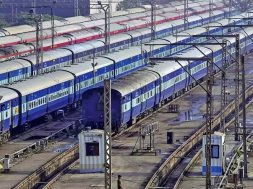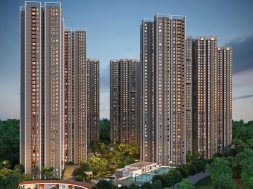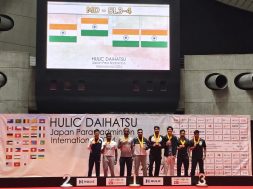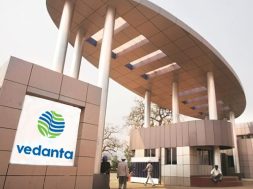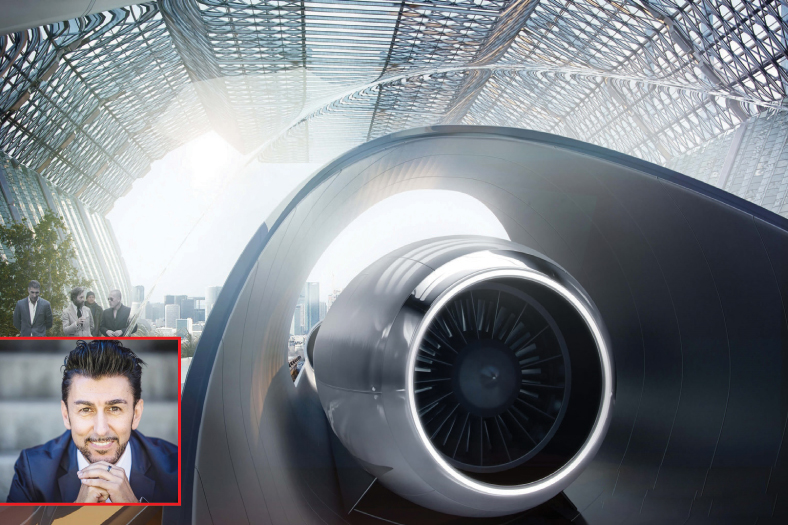Creation of Super Buildings
Widely respected as a modern visionary and innovative thinker in the fields of architecture, product design and innovation, James Law has coined the term Cybertecture to refer to the use of new materials, technologies and the melding of real and virtual worlds to re-engineer the planet to provide innovative and sustainable spaces and products for the twenty-first century. In an interview with Subhajit Roy; James Law – the founder and Chief Cybertect at James Law Cybertecture International, comments, “We not just making buildings, but hope to make ‘super buildings’ that live, breath and think for and with the people that inhabit it”.
ACE Update (ACE): You are one of the pioneers in modern architecture. How do you see the changing trend in building designing as far as India is concerned?
James Law: I do believe that the buildings that are to be built in India will be very different to even the modern buildings of the late 20th Century. The world has changed much at the beginning of the 21st Century, and India is very much a country coming to maturity in this period of time, where economic and environmental needs will be addressed in the new cityscapes and architecture being built in India. The buildings will encompass the trends being more environmentally friendly, better equipped with the latest intelligent buildings systems as well as creation of new kinds of spaces that are designed specially for the new generation of Indian businesses, life and leisure. The forms of architecture will be more creative with new materials that may bring into play some of the DNA of Indian architectural traditions and heritage mixed with modern aesthetics. But most importantly, I feel the new buildings of India will become beacons on the global stage for being symbols of the optimism that characterizes in the development of this great country.
ACE: What is the concept of Cybertecture and how is this concept evolving in India in comparison with the global trend?
James: Cybertecture is about all things that we design – not only buildings. Our philosophy of Cybertecture is to “Innovate the Fabric of Mankind” through the things we design, make or build that will create a better world. Cybertecture brings specifically to buildings the philosophy that a building is not just a building, but very much more than that, it is a device that carries the new technologies and possibilities of a better life within the building for the people who will inhabit the building. This therefore requires the use of materials that go beyond the concrete, steel and glass; and into the new materials of the silicon chip, the electrons, the internet, and the intelligence of systems to be amalgamated seamlessly into the fabric of the building. In my work so far in India, I have taken initial steps to educate my clients and partners to this approach, so that we not just making buildings, but we hope to make “super buildings” that live, breath and think for and with the people that inhabit it. If done successfully, India will have some the smartest buildings ever built on the planet empowered with Cybertecture.
ACE: What are the major advantages of Cybertecture over conventional architecture? Are they really ‘GREEN’?
James: I believe that the comparison between conventional architecture and Cybertecture is akin to the comparison between analogue computing and digital computing. In the first instance, the basic functions of the computer / building have been achieved via analogue abilities. But in the world of today and tomorrow, our computational power has increased, and so has the challenges that buildings must cater for, and so Cybertecture is akin to the revolution into digital computing which opened up multitudes of possibilities about how a building can operate, be designed, be built, be function to people. Being “Green” is just one aspect which both an analogue architecture and a Cybertecture can achieve, but it will be probably dealt with in greater complexity and dexterity by Cybertecture using new systems and technologies.
ACE: What are the major advantages of Cybertecture over conventional architecture? Are they really ‘GREEN’?
James: I believe that the comparison between conventional architecture and Cybertecture is akin to the comparison between analogue computing and digital computing. In the first instance, the basic functions of the computer / building have been achieved via analogue abilities. But in the world of today and tomorrow, our computational power has increased, and so has the challenges that buildings must cater for, and so Cybertecture is akin to the revolution into digital computing which opened up multitudes of possibilities about how a building can operate, be designed, be built, be function to people. Being “Green” is just one aspect which both an analogue architecture and a Cybertecture can achieve, but it will be probably dealt with in greater complexity and dexterity by Cybertecture using new systems and technologies.
ACE: What are the prime obstacles in adopting Cybertecture technology in India?
James: As usual, it is the education and understanding of builders, developers and people in general to understanding this changing trend of Cybertecture that is the prime obstacle. More and more people are beginning to understand why a new building should not be designed in the older conventional analogue ways, but instead be approached in ways which look towards and invest in the future of the building. But I am optimistic that Indian are forward looking people, and that soon, they will see the great upside in building India as a icon advanced design.
ACE: As your organization is actively working in India to promote modern buildings designing, which landmarks you are designing here?
James: Well, I have been fortunate to be designing a number of projects in Mumbai, including intelligent buildings such the Cybertecture Egg, the Capital, the Aquaria Grande, the Parinee I Tower, the Worli Twisting Tower as well as a whole number of other proposal ranging from intelligent townships etc. It’s an honor to be working here.
ACE: How much time will it take to bring your dream project ‘The Capital’ into reality?
James: The Capital is in the height of construction, and it is due to be topped out by middle of 2011 for the Wadhwa Group. My team and I are very excited to see this happen.
ACE: Can you brief us about the unique features of ‘The Capital’ project?
James: The Capital is a state of the art office building situated at the heart of Bandra-Kurla Complex. The building has an interesting set of spaces that organizes its circulation so that its floor plates are best utilized with flexibility and efficiency. Set adjacent to a park, the public spaces of the building guides people up a lobby, which starts at ground level, leading up to a sky lobby over looking the greenery of the park, creating a space of nature. On the park side, the building as a ten-storey tall atrium in the shape of an oval, containing an architectural egg that has feature offices looking over the park. Wrapped around this egg are terraces which form green spaces for offices, and have cascading waterfalls and landscape to create a canyon effect. At the main entrance of the building, a giant valley in the form of an organically warped glass curtain wall stretches up the full height of the building, and gives the arrival at the entrance an awesome unique statement. Double solar fins wrapped around the building provide solar protection from the sun, as well as containing LED lighting that follows the contours of the building.
7
Cookie Consent
We use cookies to personalize your experience. By continuing to visit this website you agree to our Terms & Conditions, Privacy Policy and Cookie Policy.
